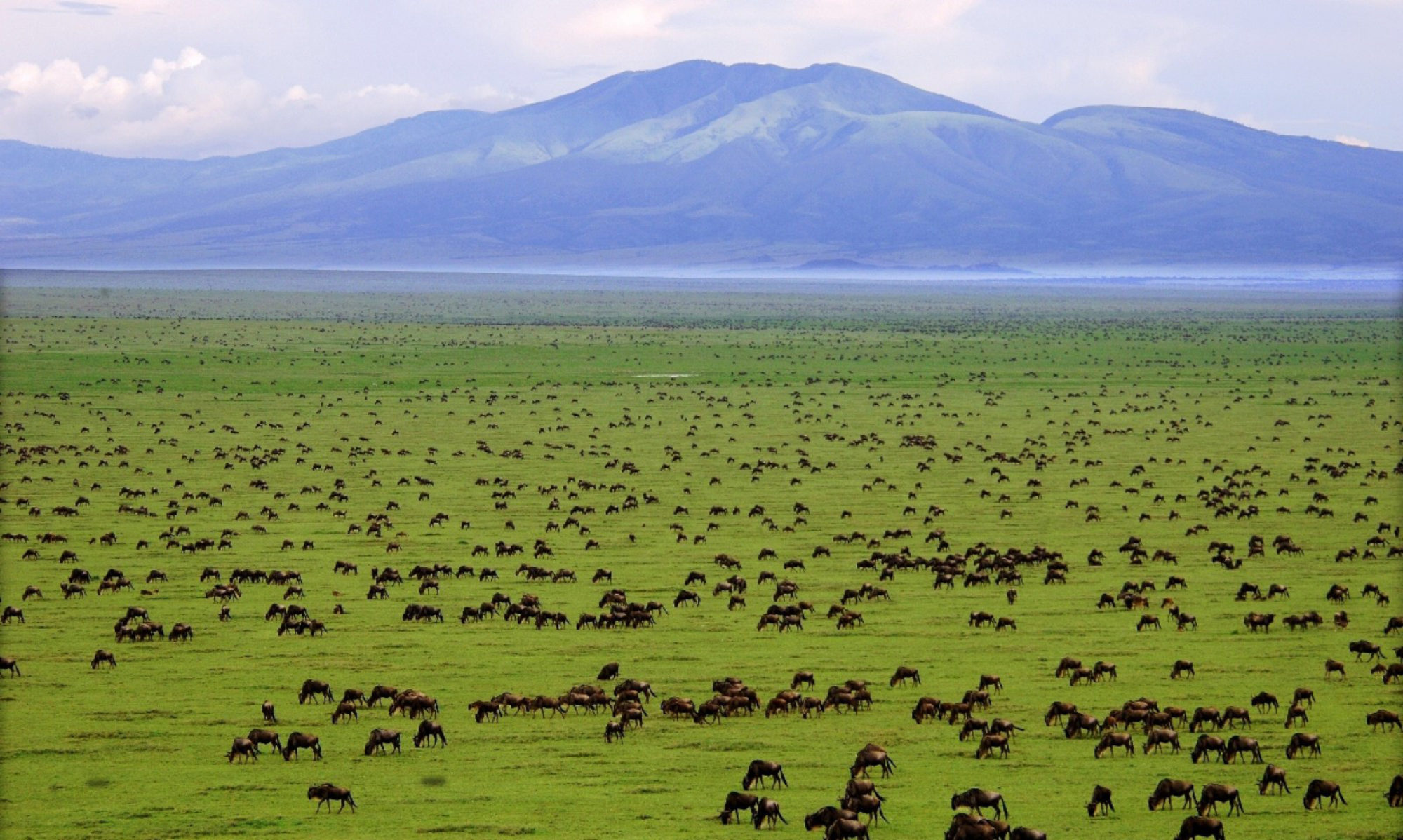Mount Kilimanjaro—Known as Kili to many of the locals, Mount Kilimanjaro is the tallest peak in Africa. More than a mountain, Kilimanjaro is a dormant volcano with three volcanic cones: Kibo, Mawenzi, and Shira. There are five commonly used climbing routes that reduce down to two paths to the summit. About half of the climbers who attempt the climb fail to reach the summit, but even if you’re not a hardcore climber, there are amazing views from a distance as well.
At approximately 5,895m high Mount Kilimanjaro is the world’s largest free-standing mountain and rises from a completely flat plain. It is not as far above sea level and the difference between its peak and base is much bigger. Mount Kilimanjaro is a UNESCO world heritage and covers approximately 755km². Dense vegetation is scarce and primarily there is just palm trees and acacias, but due to volcanic ash, the grass is richly nourishing. Herds of Zebras, elephants, buffalo and wildebeest relish and sought after the grass. In mount Kilimanjaro, melt-water streams from its summit nourish a lush belt of tropical forest that is home to herds of elephants. There is a moorland that is dotted with massive lobelias and heathers. The temperature around Mount Kilimanjaro drops down to sub-zero at night and the oxygen level is half that of sea level.
The mountain boasts of many hotels and Kilimanjaro National Park. There is a vast majority of wildlife available here. Healthy herds of elephants roam around there freely. Among the herd of lumbering elephants with much sought after tusks that are over 50 years old, They can be seen with their huge ivory tusks almost dragging them to the ground. Other animals found there are, warthogs, hippos, impalas, zebras, giraffes, elands and gazelles that are less common. Cheetahs, lions, leopards and jackals are also present among others. The diverse habitats around mount Kilimanjaro also house a wide variety of bird species. There are avian species and 13 that are classified at risk of extinction. It is the ultimate superlative destination for anyone wanting to do an East-African bird trip, especially during the wet season. To top it off, on the beautiful scenery is mosses and lichens that are clinging on to the rocks.
Mount Kilimanjaro can be visited anytime throughout the year. However, the best times to visit is during the dryer season, from January to February and August to September. There are two rainy seasons that are worth avoiding from March to mid-May and October to the beginning of December. During the rainy seasons, the routes become highly slippery. Hotels and lodges for accommodation are available too.
